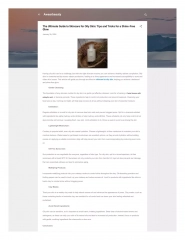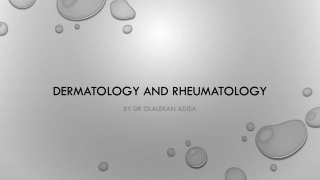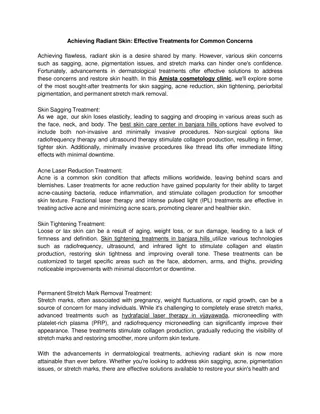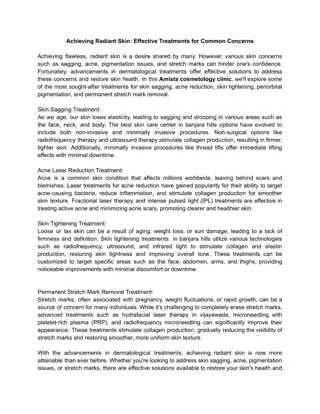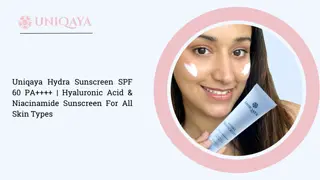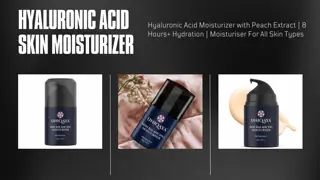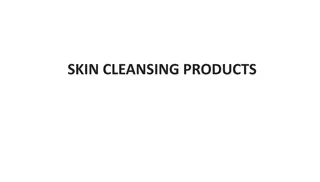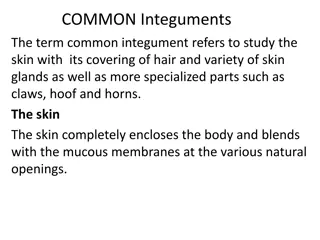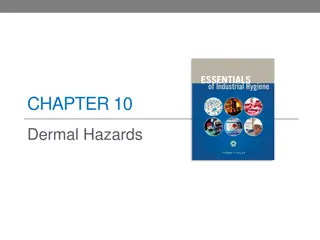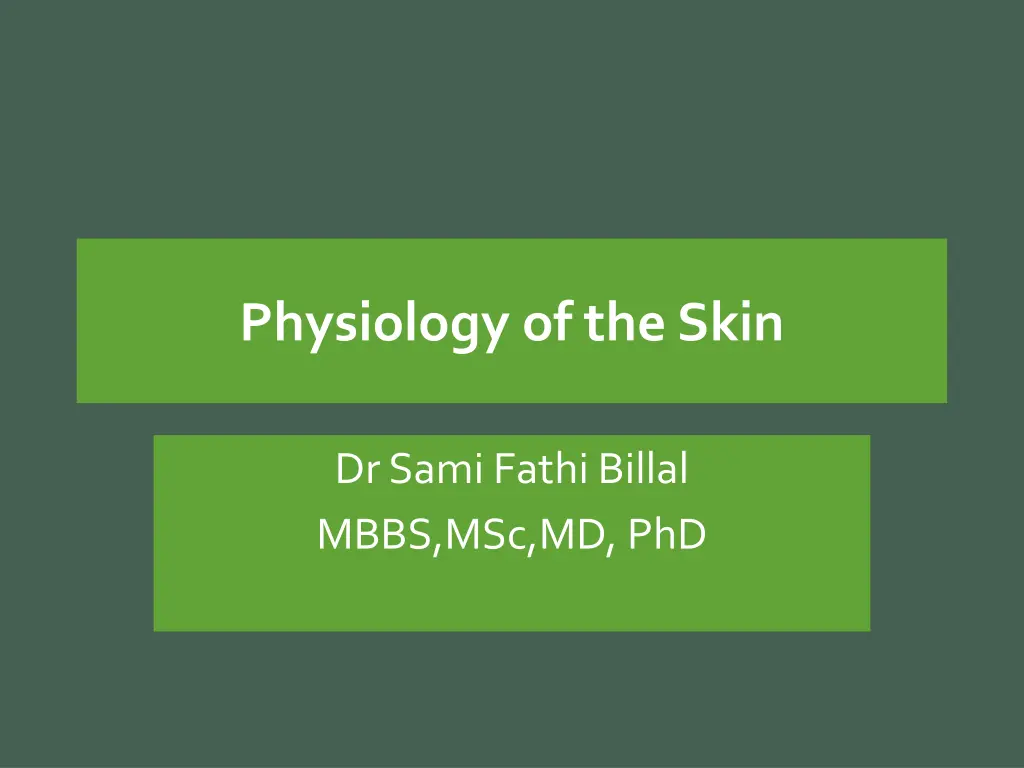
Skin Physiology and Dysfunction Overview
Gain insights into the functions of the skin, including barrier function, immunologic function, temperature regulation, and protection from radiation. Learn how dysfunction in these areas can lead to various skin conditions and diseases. Explore the importance of maintaining a healthy skin barrier and immunologic response to prevent infections and skin cancer. Understand the role of skin in regulating body temperature and protecting against harmful UV radiation.
Download Presentation

Please find below an Image/Link to download the presentation.
The content on the website is provided AS IS for your information and personal use only. It may not be sold, licensed, or shared on other websites without obtaining consent from the author. If you encounter any issues during the download, it is possible that the publisher has removed the file from their server.
You are allowed to download the files provided on this website for personal or commercial use, subject to the condition that they are used lawfully. All files are the property of their respective owners.
The content on the website is provided AS IS for your information and personal use only. It may not be sold, licensed, or shared on other websites without obtaining consent from the author.
E N D
Presentation Transcript
Physiology of the Skin Dr Sami Fathi Billal MBBS,MSc,MD, PhD
Objectives By completing this lecture, you should be able to: 1. Gain familiarity with skin functions and how relevant dysfunction contributes to disease 2. Approach dermatologic understanding of basic skin structure and microanatomy disease with an 2
Functions of the Skin: 1- Barrier function The skin provides a physical barrier that regulates water loss and protects against mechanical, chemical and microbial insults from the external environment. Dysfunction of the skin barrier leads to injury, dehydration, inflammation. infection and 3
Loss of skin barrier functions This child has atopic dermatitis, chronic condition associated with barrier dysfunction. a skin
2- Immunologic function As an immunologic barrier, the skin both senses and responds to pathogens. Dysfunction of the immunologic barrier leads to infection, skin cancer, inflammatory skin conditions and allergy. 5
Loss of Immunologic function This HIV-positive man has molluscum contagiosum, a skin infection caused by a virus.
3- Temperature regulation The temperature with the insulating properties of fat and sweating and a dense superficial microvasculature. Dysfunction of temperature regulation leads to hyper- or hypothermia. skin maintains a constant body 7
4- Protection from radiation The dark pigment melanin in the epidermis protects cells against ultraviolet radiation. Dysfunction of melanin production causes the patient to be more susceptible to skin cancer. 8
Loss of Protection from radiation This patient with albinism has a skin cancer on the back.
5- Nerve sensation receptors Sensory constantly monitor the environment and mechanoreceptors in the skin are important for the body s interactions with physical objects Dysfunction leads dysesthesia (abnormal insensitivity to injury (e.g. diabetes, leprosy). allow the skin to to pruritus sensation), (itch), and 10
Loss of sensation function Chronic ulcer on the foot of a patient with peripheral neuropathy related to diabetes.
6- Injury repair The cutaneous wound repair process has four phases: coagulation, inflammatory phase, proliferative-migratory (tissue formation), and remodeling phase Loss of ability to repair injury (e.g. post- radiation treatment) leads to delayed wound healing. phase 12
Loss of Injury repair ability This patient has a chronic ulcer following trauma on the scalp in a site previously irradiated as part of treatment for squamous cell carcinoma.
7- Appearance, Quality of Life (Cosmetic impact) Skin defects and even physiologic aging can result in considerable psychological distress, an important clinical feature of many cutaneous diseases. 14
Loss of Cosmetic Impact This patient associated characterized by loss of fat throughout the face. Atrophy of buccal fat pads have an impact on self- esteem. has lipoatrophy, HIV-

